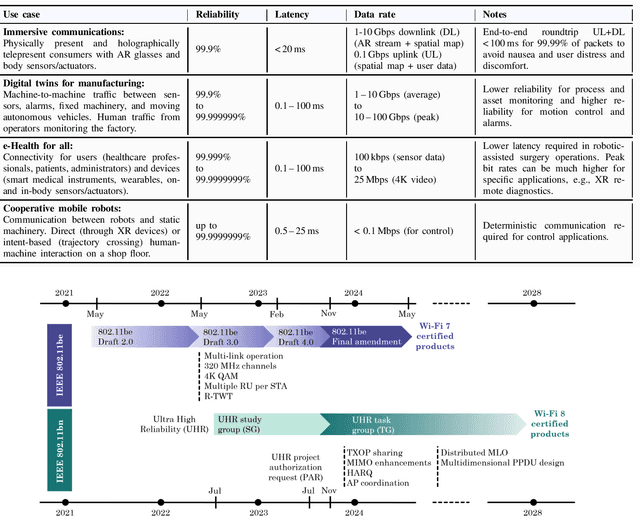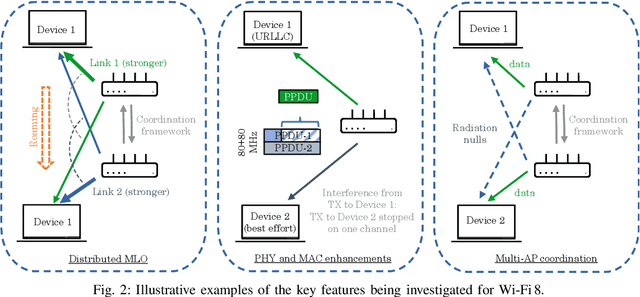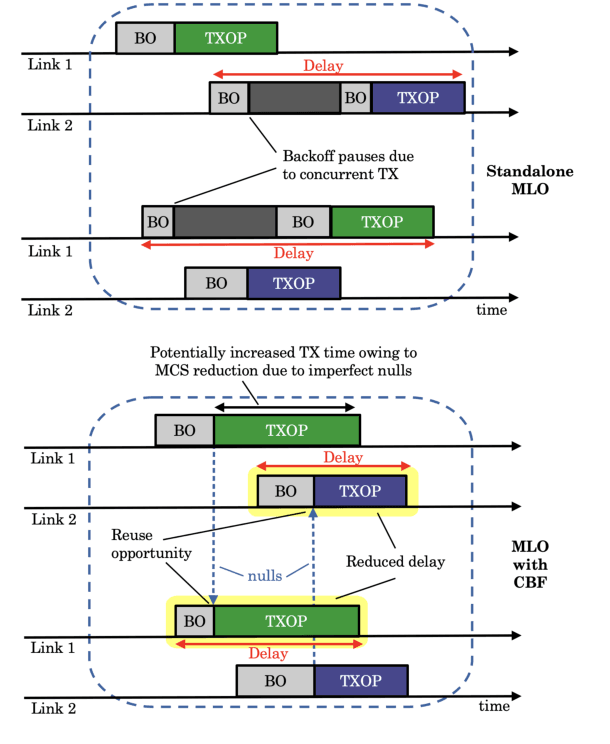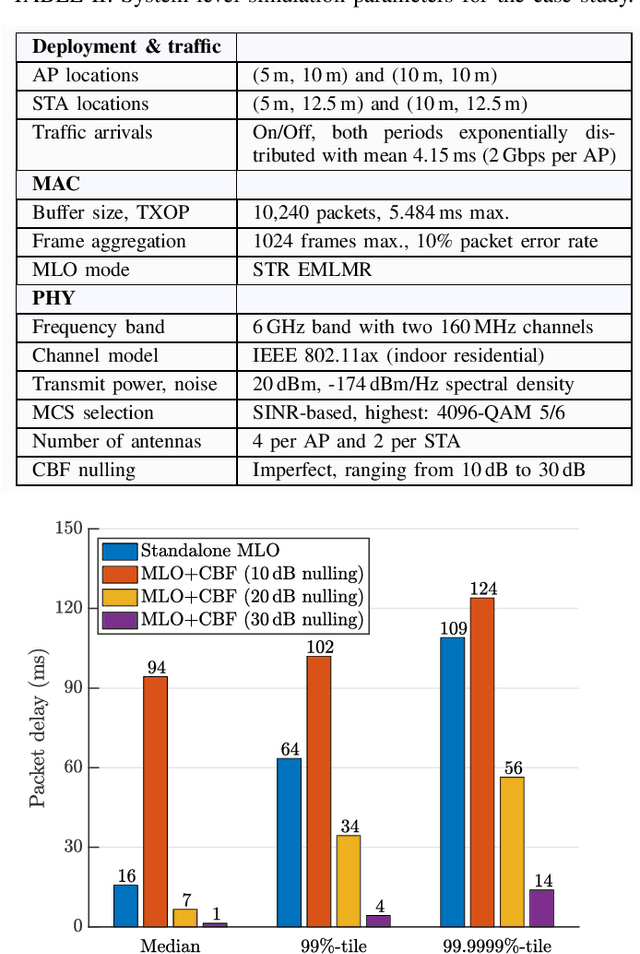Lorenzo Galati Giordano
Distributed MIMO for 6G sub-Networks in the Unlicensed Spectrum
Oct 23, 2023Abstract:In this paper, we consider the sixth generation (6G) sub-networks, where hyper reliable low latency communications (HRLLC) requirements are expected to be met. We focus on a scenario where multiple sub-networks are active in the service area and assess the feasibility of using the 6 GHz unlicensed spectrum to operate such deployment, evaluating the impact of listen before talk (LBT). Then, we explore the benefits of using distributed multiple input multiple output (MIMO), where the available antennas in every sub-network are distributed over a number of access points (APs). Specifically, we compare different configurations of distributed MIMO with respect to centralized MIMO, where a single AP with all antennas is located at the center of every sub-network.
What Will Wi-Fi 8 Be? A Primer on IEEE 802.11bn Ultra High Reliability
Mar 18, 2023



Abstract:What will Wi-Fi 8 be? Driven by the strict requirements of emerging applications, next-generation Wi-Fi is set to prioritize Ultra High Reliability (UHR) above all. In this paper, we explore the journey towards IEEE 802.11bn UHR, the amendment that will form the basis of Wi-Fi 8. After providing an overview of the nearly completed Wi-Fi 7 standard, we present new use cases calling for further Wi-Fi evolution. We also outline current standardization, certification, and spectrum allocation activities, sharing updates from the newly formed UHR Study Group. We then introduce the disruptive new features envisioned for Wi-Fi 8 and discuss the associated research challenges. Among those, we focus on access point coordination and demonstrate that it could build upon 802.11be multi-link operation to make Ultra High Reliability a reality in Wi-Fi 8.
 Add to Chrome
Add to Chrome Add to Firefox
Add to Firefox Add to Edge
Add to Edge